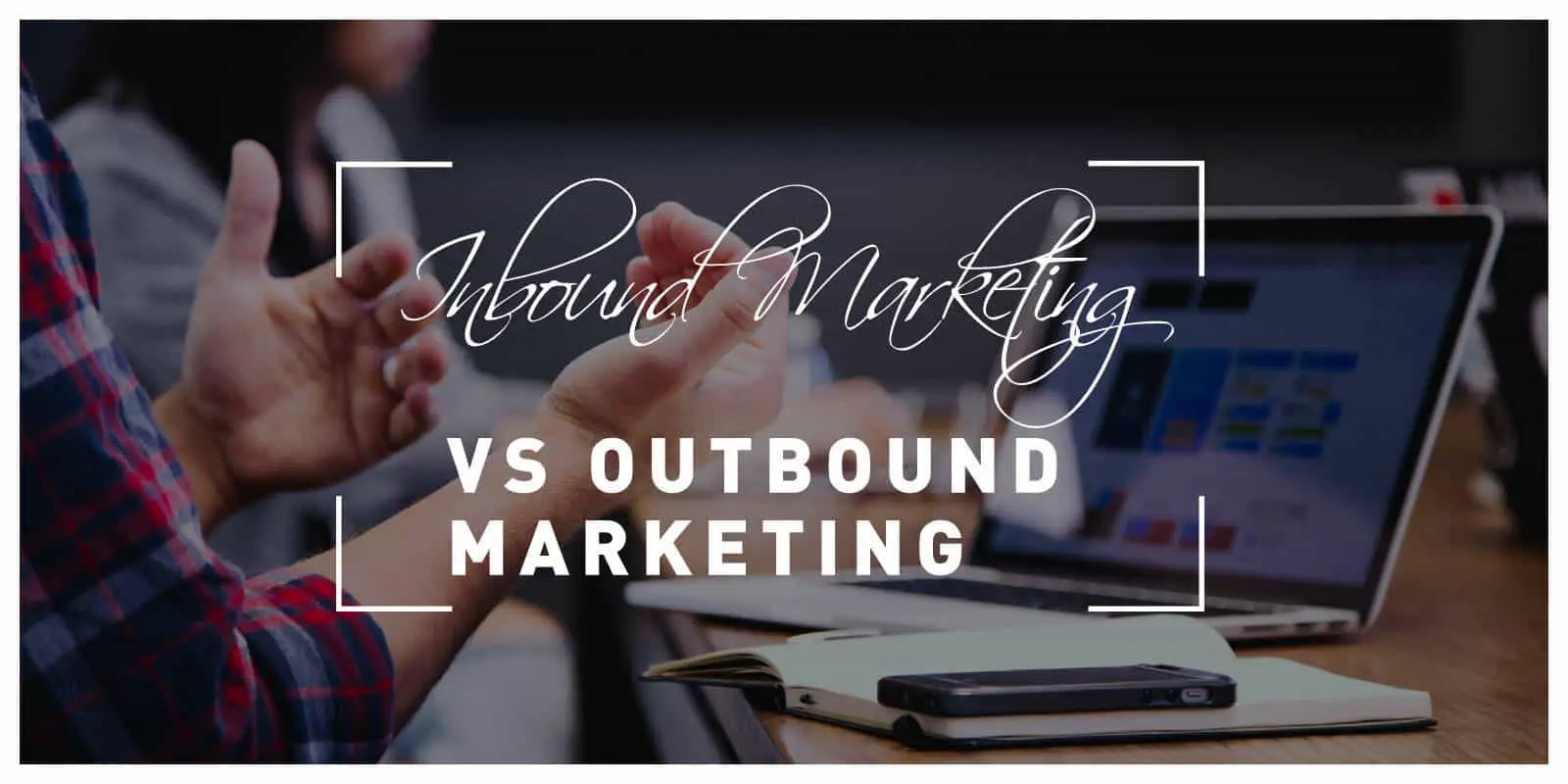The Internet has touched virtually every aspect of life, and that includes the way we do business. In particular, it has had an enormous impact on marketing.
Marketing is that essential bridge between a business and the marketplace. It’s the way that businesses spread the word about their products or services. At the bottom, marketing has to do with a business getting its products to the right place at the right time.
Modern marketing breaks down into two basic categories: outbound marketing and inbound marketing. Outbound marketing can be thought of as old school, the way that marketing has always been done.
Inbound marketing is the new kid on the block, an e-commerce adaptation that pays close attention to the way that consumers are behaving online. Its proponents say that inbound marketing better positions a company to be the solution their customers are looking for.
Increasingly within the industry, outbound marketing is seen as a dinosaur.
Outbound Marketing

Outbound marketing hasn’t always been known as outbound marketing, but it’s marketing in its original form. It’s the kind that we all grew up with and includes such familiar forms as TV commercials, radio commercials, and billboards along the side of the road. It also includes things like newspaper and magazine ads, cold calling, and direct mail.
Even certain forms of Internet advertising are stirred into the outbound marketing mix: things like website banners and pop-up windows. (Does anyone like those?) “I call these methods ‘outbound marketing,’” said Brian Halligan, an MIT professor and CEO of Hubspot, “because marketers push his or her message out far and wide, hoping that it resonates with that needle in the haystack.”
It is, in short, about making some noise and hoping someone listens. Generally, authorities say, the older the customers are, the better the chances that outbound marketing is going to influence them. This is probably because it’s what they’re used to: the kinds of advertising they’ve always seen on TV and in newspaper ads and flyers.
Turning Consumers Off
But outbound marketing is seen as overly aggressive, and this turns a lot of people off, especially younger consumers. Surveys show that a lot of people do their best to avoid it. Consider these facts:
- 85% of TV viewers DVR favorite programs, and fast forward through commercials
- 45% of direct mail never gets opened
- 200 million people are on the national Do Not Call registry
- 84% of 2535 year olds are likely to leave a website with too much advertising
In sum, consumers do their best to shut out the marketing noise. It costs a lot of money to advertise on radio and TV, but as the numbers above indicate, all that outbound marketing effort may ultimately be futile.
Inbound Marketing: A Paradigm Shift
Shopping behavior has changed significantly due to the Internet. The ease of shopping online is simply unsurpassed. In the United States alone, Internet retail sales have grown steadily over the last couple of years, and that trend shows no sign of letting up.
As online shopping has grown and changed, marketing has adapted itself to keep pace. Instead of trying to get the attention of customers, inbound marketers try to earn it. “My definition of inbound [marketing],” says Martin McDonald, the founder of WebMarketingSchool.com and an SEO professional, “revolves around being somewhere with the answer when someone is looking for it – not sticking an advert for a product or service in front of their faces.”
Get Yourself Found Online

This is the key difference between outbound marketing and inbound marketing, and true believers say marketers who have embraced inbound show more respect for consumers than marketers have historically shown.
“Rather than doing outbound marketing to the masses of people who are trying to block you out,” Brian Halligan says, “I advocate doing inbound marketing, where you help yourself ‘get found’ by people already learning about and shopping in your industry.”
To achieve this, he explains, inbound marketers need to set their websites up like an industry hub. An industry hub will naturally attract visitors through search engines, blogging, and social media. “I believe most marketers today spend ninety percent of their efforts on outbound marketing and ten percent on inbound marketing, and I advocate that those ratios flip.”
New Possibilities

Inbound marketing is clearly the wave of the future. It opens up new possibilities for marketers to promote their products, in ways that consumers find the least intrusive, and thus the least offensive. It is much more cost-effective. Inbound marketing platforms like social media profiles, blogs, and promotional videos are a lot cheaper than traditional TV commercials and print ads.
An advocate once said that inbound marketing can attract customers the way that a magnet can attract a handful of nails. That isn’t much of an exaggeration. Inbound marketing works because it is directed at people who have already expressed an interest in a product.
MassivePeak.com is a digital marketing, brand management, and SEO optimization company in Denver. Contact us today to see how we can help your business get found and shine online!

